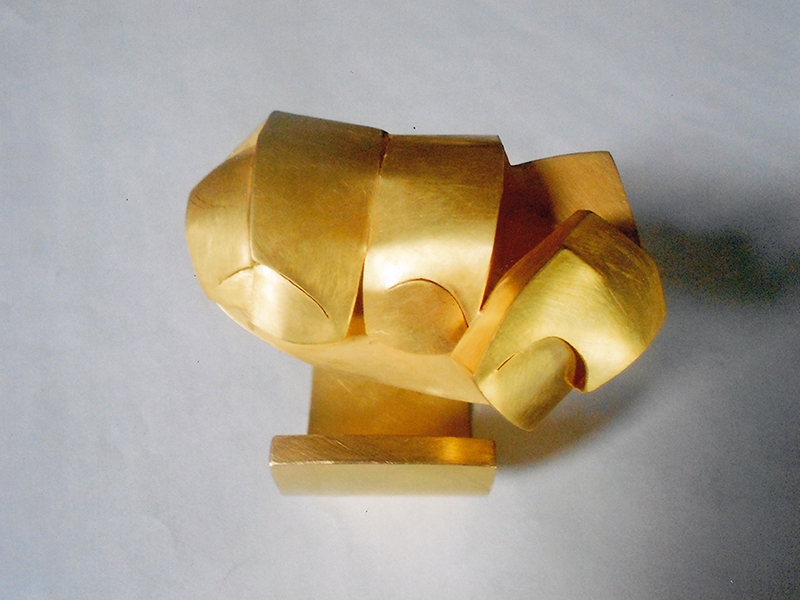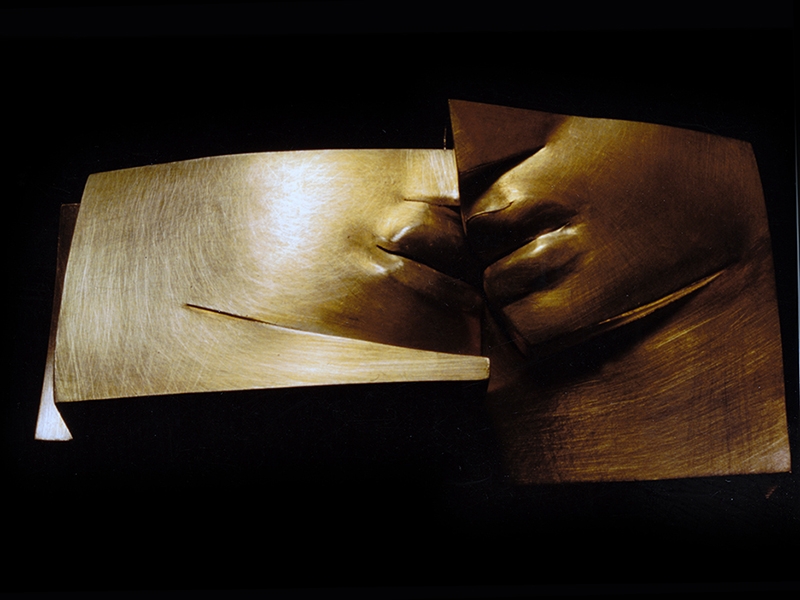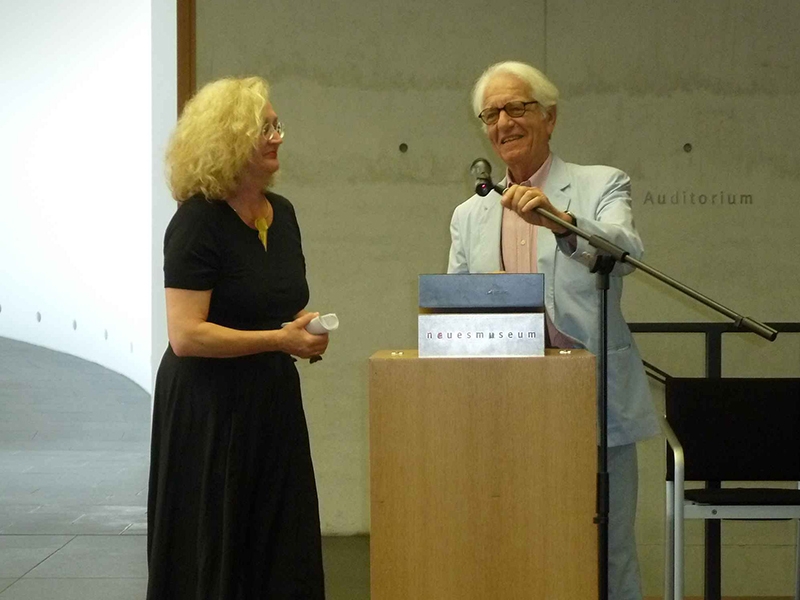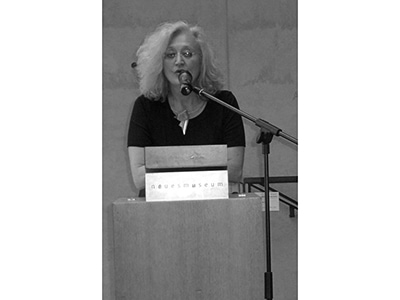“I believe that my actions are searching for signs to be able to grow, to become more humane and free, to bear witness with art to man as the being that can wrest something from the “panta rhei” (“flowing of everything,” Heraclitus), from coming into being, something that cannot expire, something with which heaven becomes more buoyant.” —Bruno Martinazzi

When we look back on the short history of contemporary auteur jewelry, one personality of total and indisputable greatness stands out, like a solitaire, in an international dimension—a master, a mastermind. For he believed, to the very end, that the word, beauty, remembrance, its evocation and literary-philosophical pervasion is able to prevent wars, bring about peace, and create sense in life. His contribution to this was to take place through the art of goldsmithing, through sculpture, language, text.
That’s what he was like, Bruno Martinazzi. This year he would have celebrated his 95th birthday, and now he has left us just a few months shy of it.

Born in Turin in 1923, from a cultured family, aware early on of the cultural heritage of italianità, of its message and significance, filled with a curiosity for painting, music, and reading, engaged as a young partisan against the Fascist regime, a half-orphan on account of losing his father as a child and later his beloved sister—it was under these auspices that the course for a very special creativity and ethical stance was set. After studying chemistry, after a good solid job in his field, Martinazzi decided to give in to his needs and, at the age of 28, learned the art of goldsmithing, in Turin, his hometown. In doing so, he found his calling, which he augmented by studying sculpture, by further artistic training. With Carla Gallo Barbisio, his future wife, and their children, Paola and Peter, he developed another proclivity, which led to studying psychology. Henceforth he worked in all of these areas, initially in gold informed by antique bas-reliefs and by the gestural liberation of Art Informel, in sculpture with its figurative reduction and abstraction, and in the social domain with traumatized children.
During the 1960s, his characteristic idiom crystallized, which ran through his oeuvre in varying ways to the end. Pop also played a role, as did contemporary artistic trends, yet what Martinazzi was really looking for was a language, an imago, a form which would represent more in order to fulfil his increasing interest in myths and symbolism, in permanence, in the essential substance of his works.
He presided over no “school,” belonged to no trend in the narrower sense. Yet he inspired and influenced generations in his own quiet and tenacious way. His passion was a synthesis of present and past, a revival of handed-down knowledge, seeing beyond trends and platitudes; it was the fusion of beauty and intellectual understanding, which he gradually closed in on, deepened through his profound ongoing engagement with Plato, Ovid, Homer, Dante, Aeschylus, and Sophocles, the various religious sciences, modern philosophers, and poets, who he, too, viewed as ranking among the disseminators of “nuances,” of epistemic values. In short, he cultivated and represented the humanistic richness of our Western history, always looking ahead and at the present. He wanted to tell this story anew in sculptural images, in his artworks, for the future, for witness of the time, for us.

For, as Plato explains in Timaeus, only where matter harbors soul does it have a share in the divine, in the immortal, in timeless beauty and can it convince through visions which will never attain a simple manifestation, a pure ostensible and superficial existence. Martinazzi was deeply convinced of this. Just as the demiurge in Plato’s realization scrapes out his form out of chaos, the goldsmith and sculptor Martinazzi isolates from his material those details which symbolically and metaphorically set an example for a great gesture, for a global vision, without aggression, without provocation—on the contrary full of sensuality and animated presence.
We encounter his beguilingly charming works in luminous gold in a seemingly modest way. A thumb, individual fingers, a hand, fist, foot, eye, mouth, breasts, buttocks, the female abdomen, a profile, alienated, secretive. All are references and allusions to a whole, to their protagonists in a panorama of gods and goddesses, of nymphs and angels, of symbolic figures from legends and creation myths. This could be seen as a constraint, but above all else it is about concentration, about focusing on central aphorisms, on the intuitive sculptural materialization of immaterial content. Nobody in goldsmithing has communicated between these two worlds quite so much as he has. His oeuvre has nurtured and formed the development of contemporary jewelry perhaps without us even being aware of its tangible influence. He was there, one of the grands seigneurs of our genre’s zero hour; together with Jünger, Hiramatsu, and Pinton, among others, he predetermined the way, set out its general “universal idea,” namely the fusion of art and jewelry, and gave lasting form to it. In our time, where historical consciousness is increasingly in danger of being lost, where everything passes quickly with no firm grounding, the loss of Bruno Martinazzi is all the more painful.





